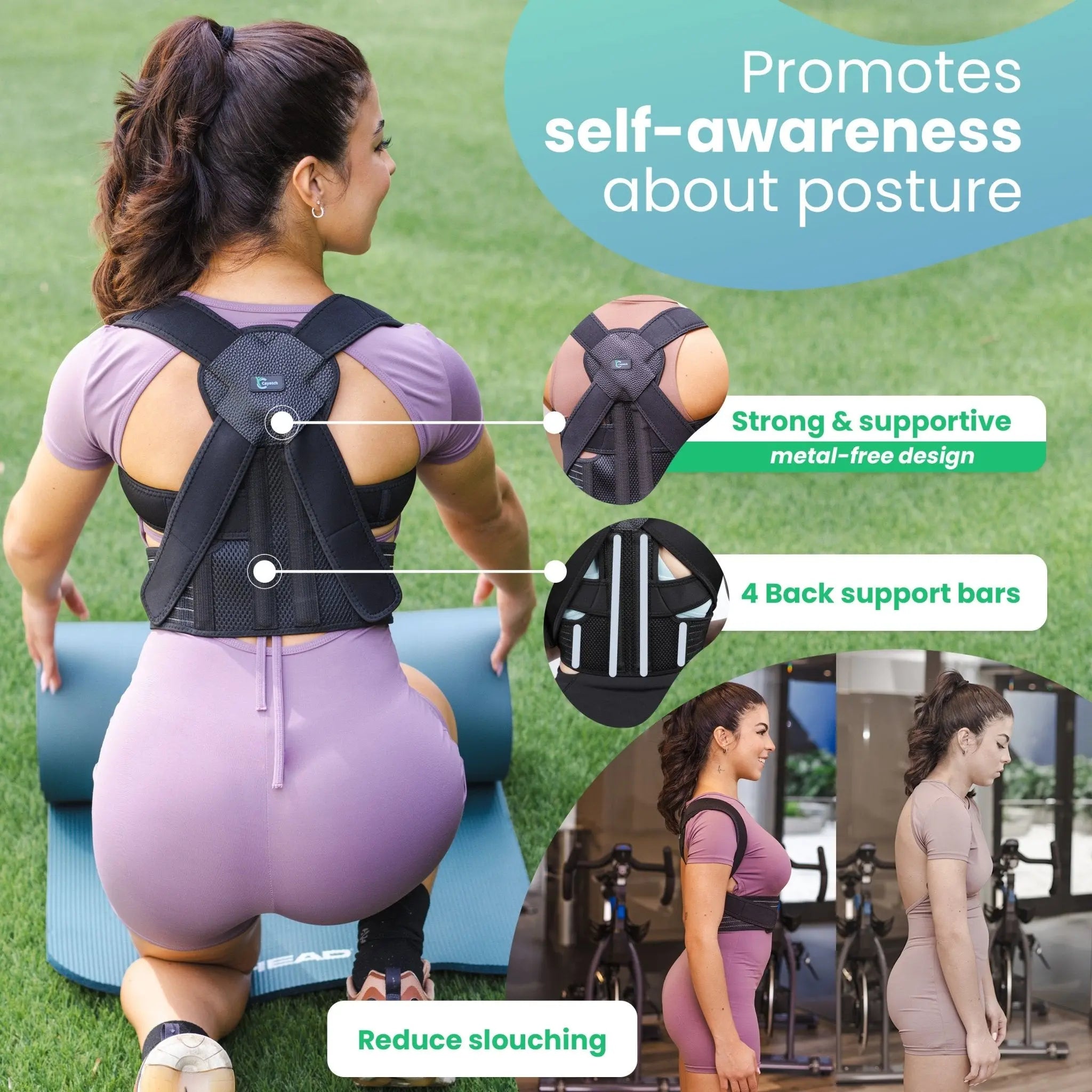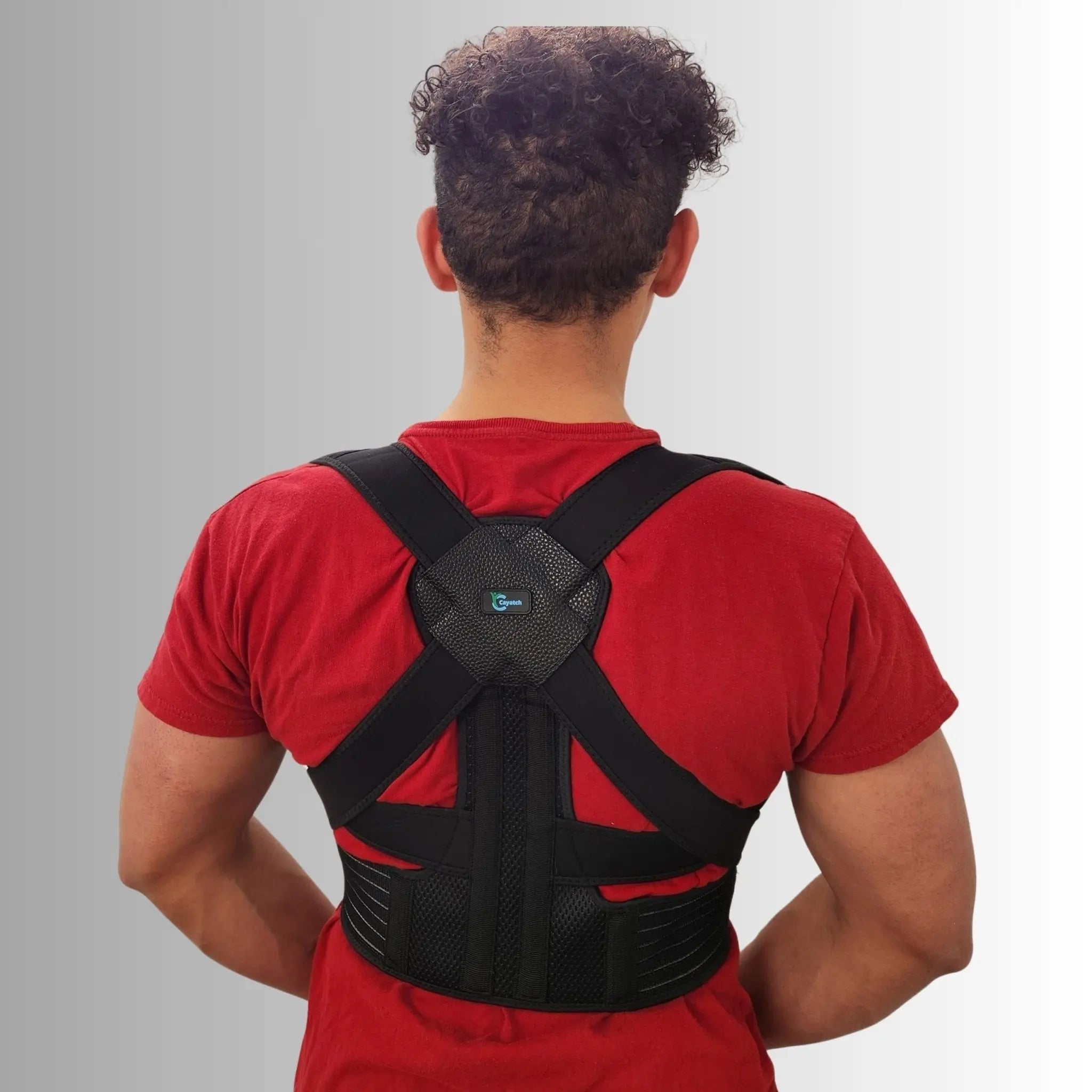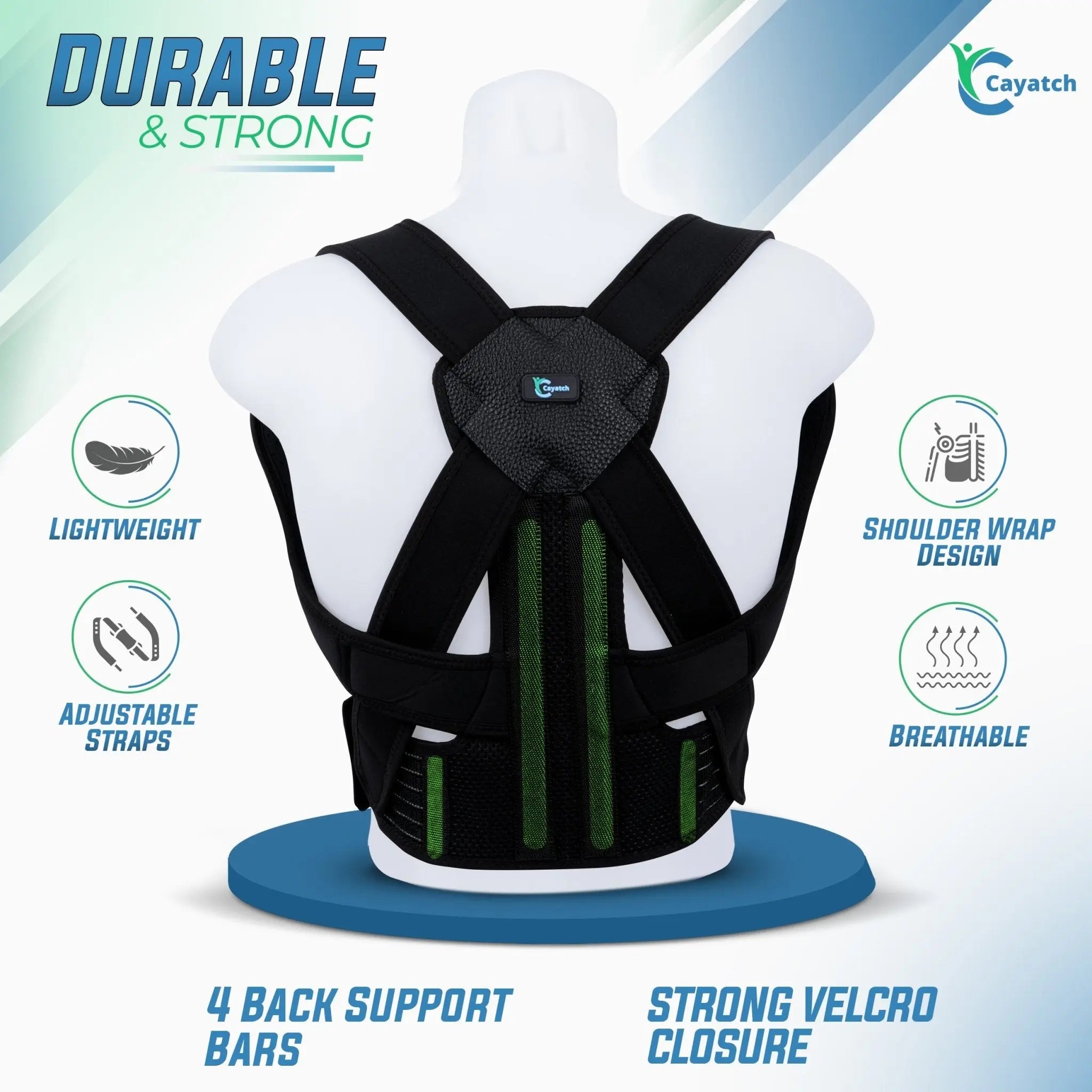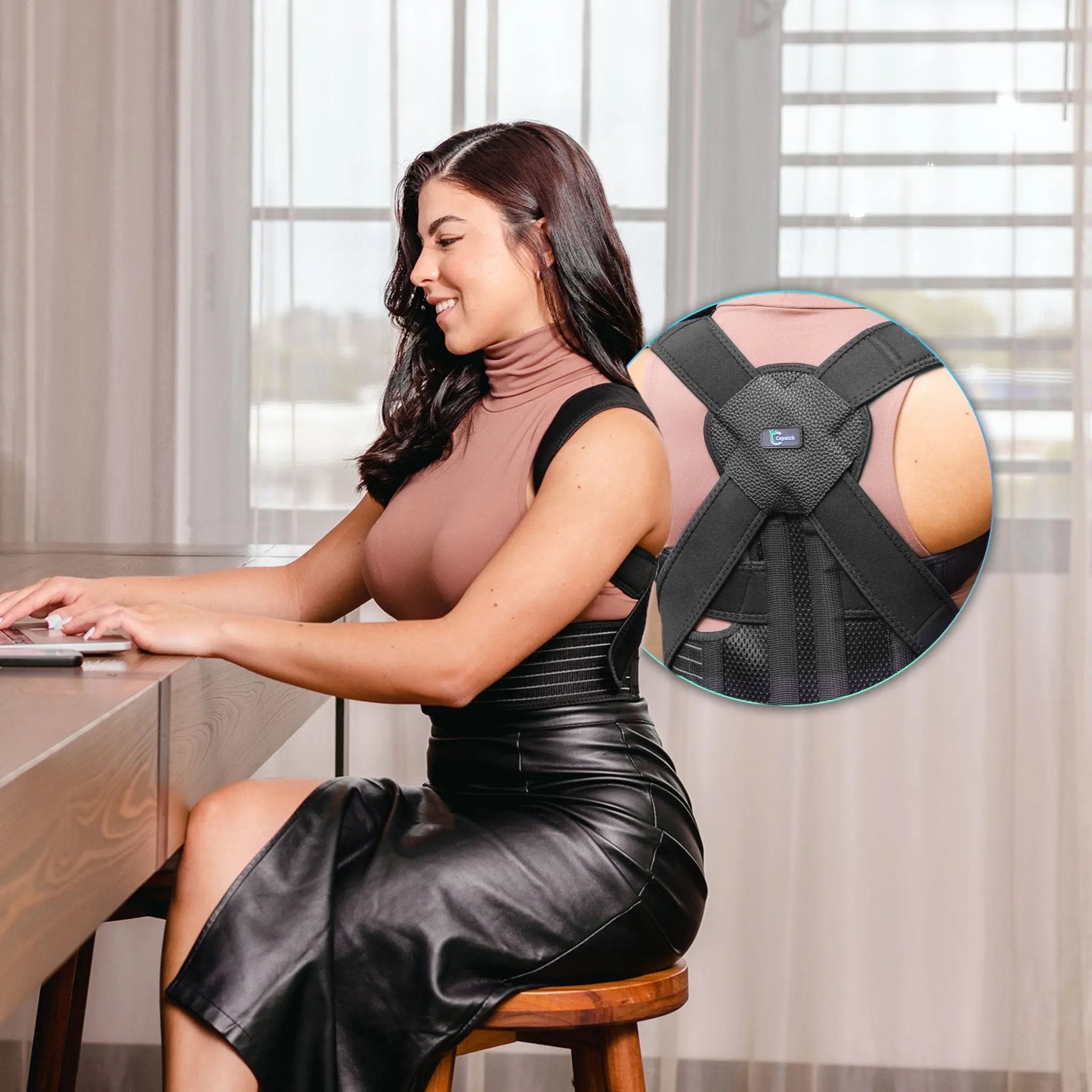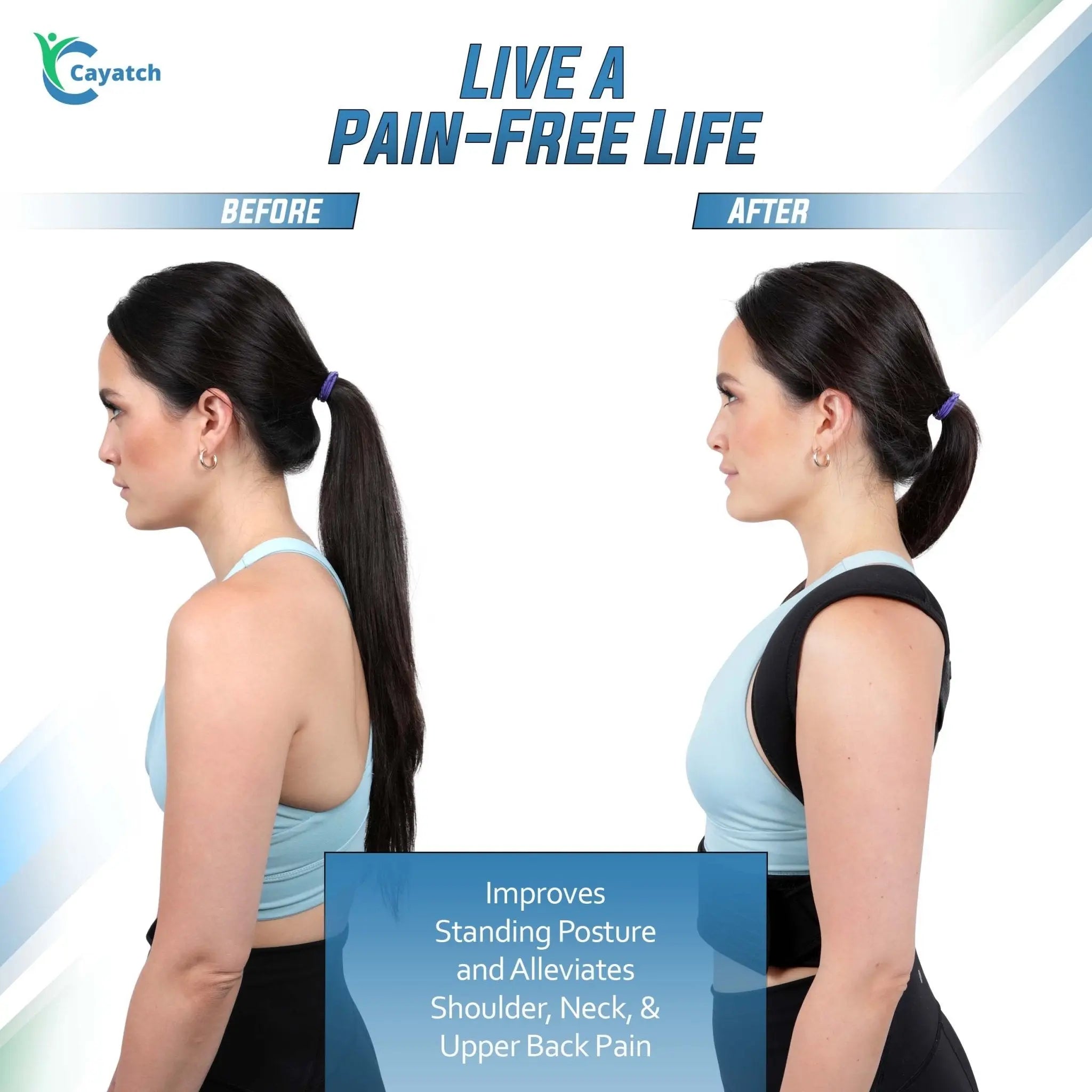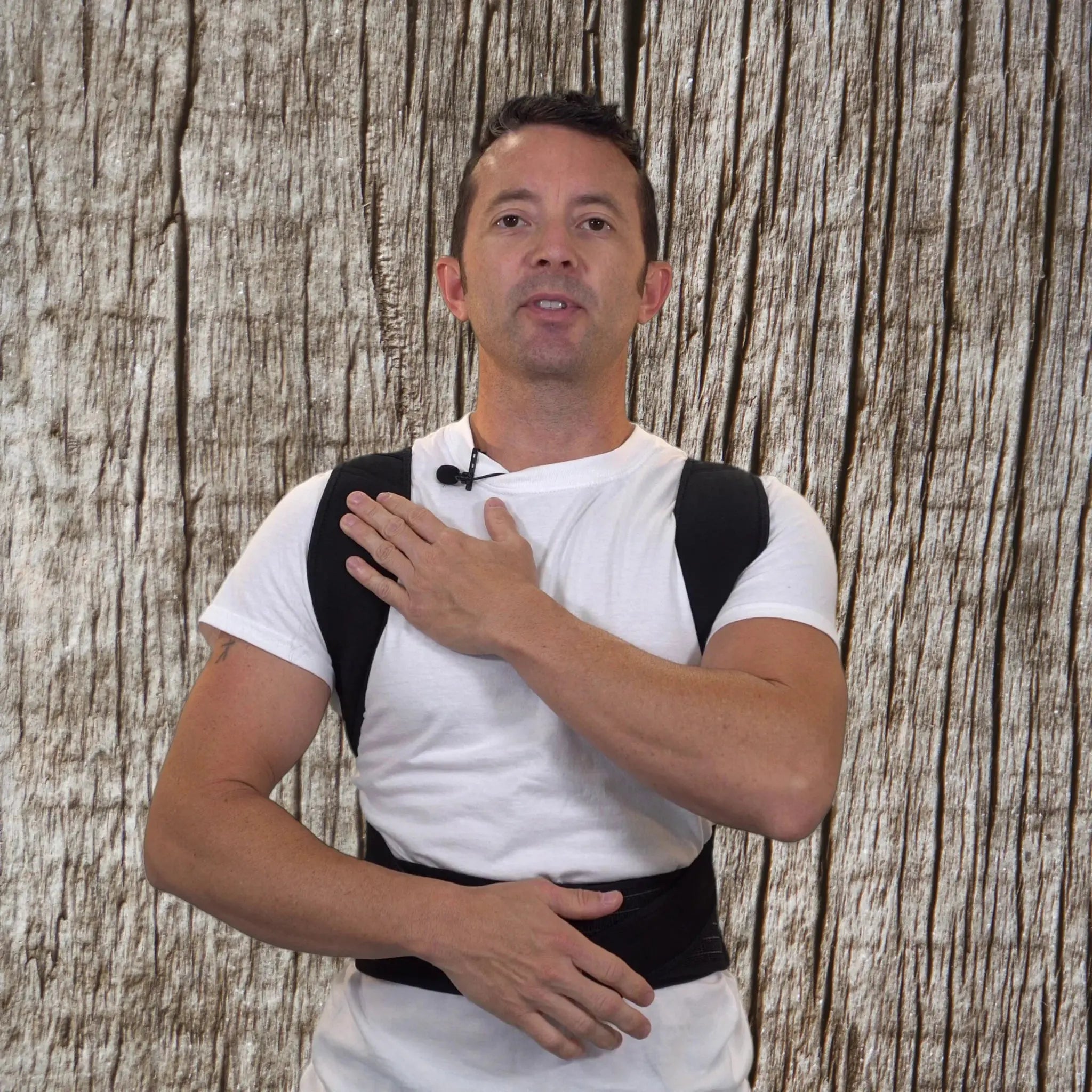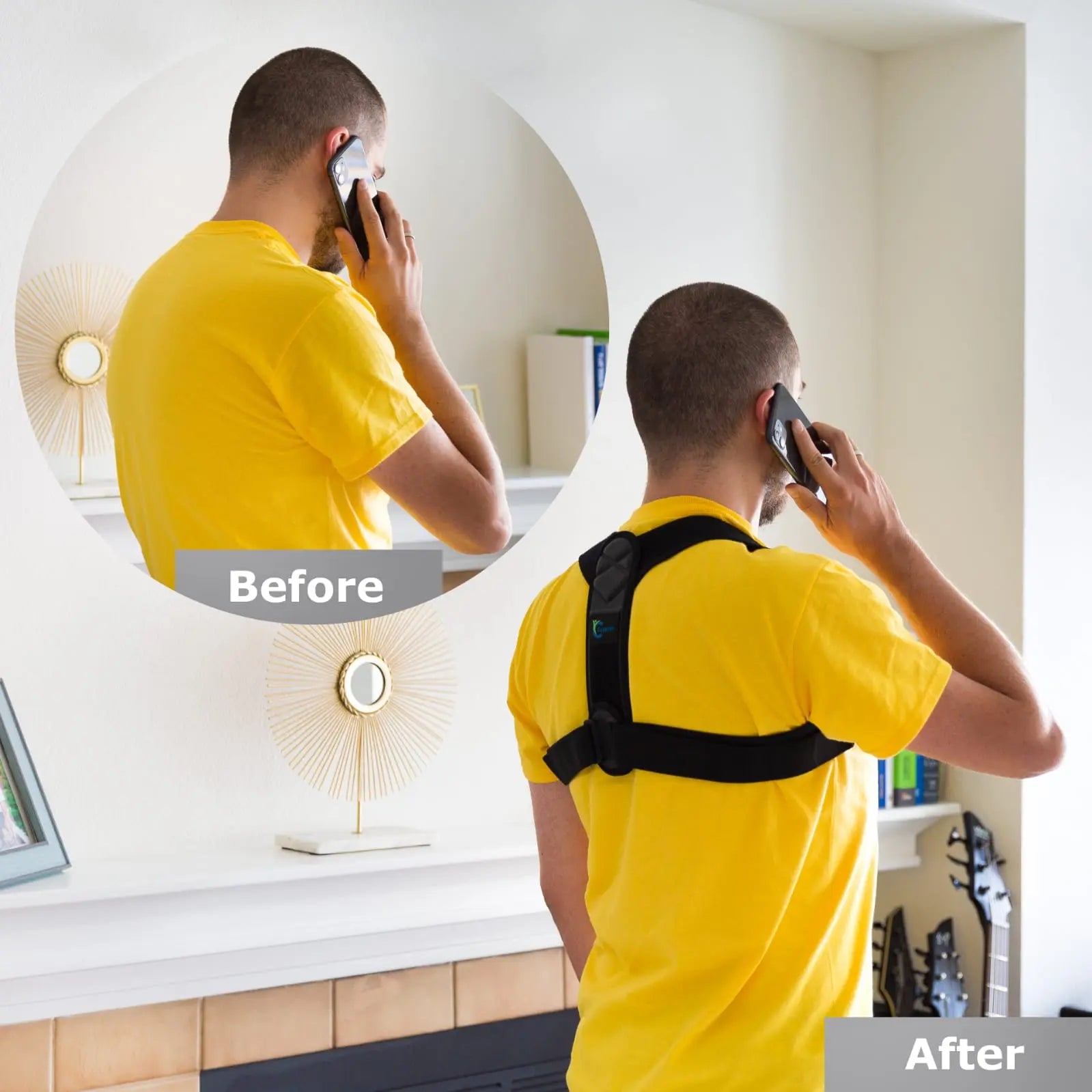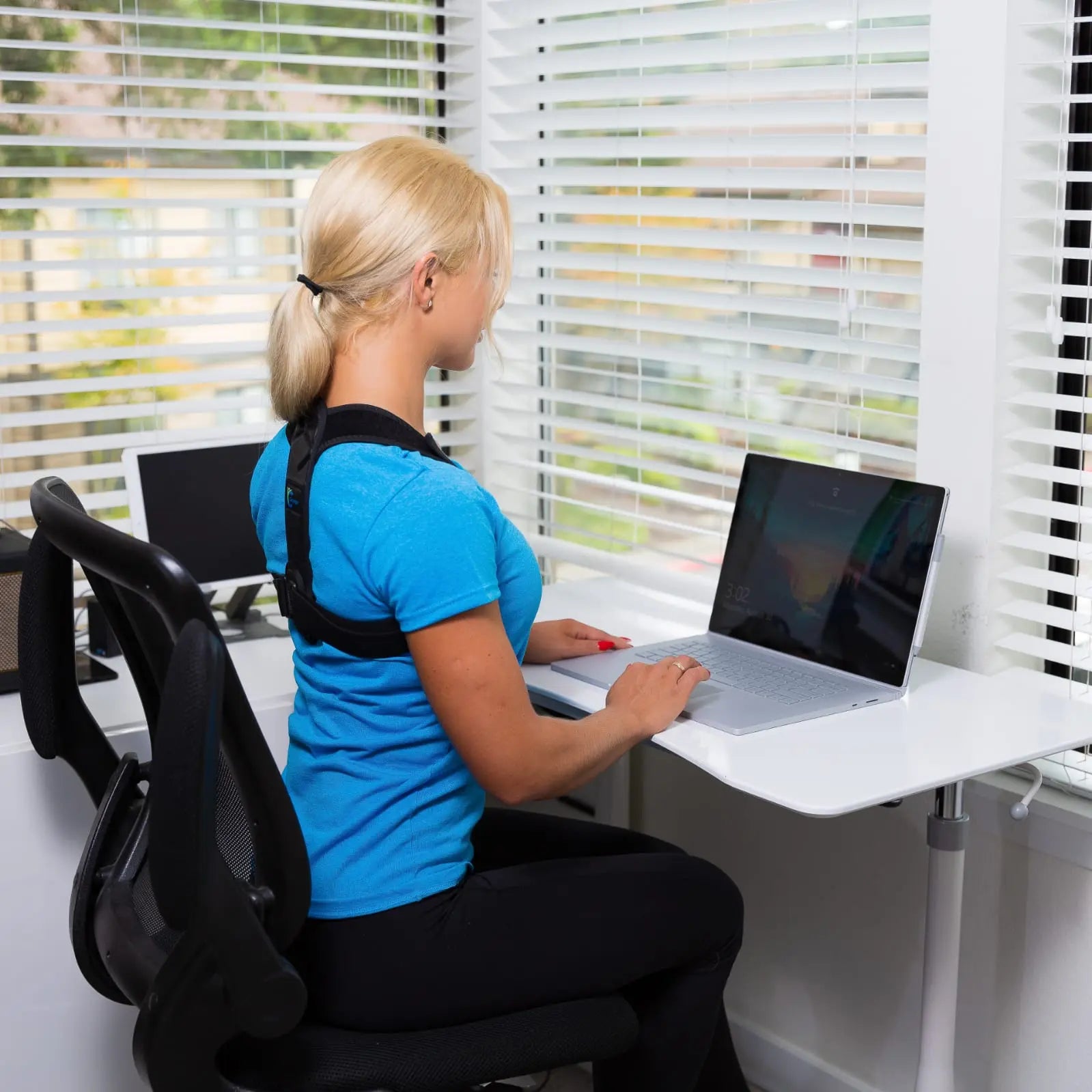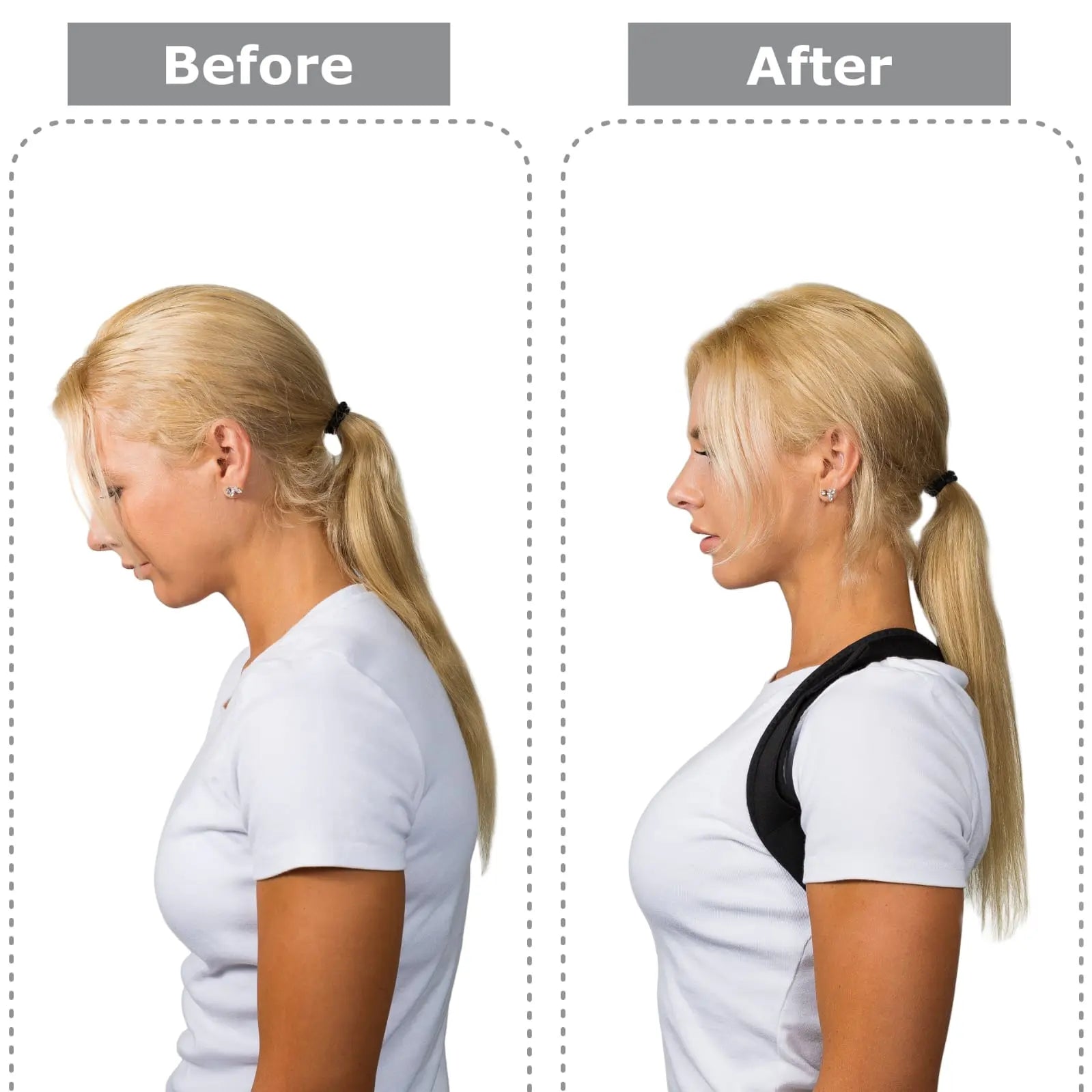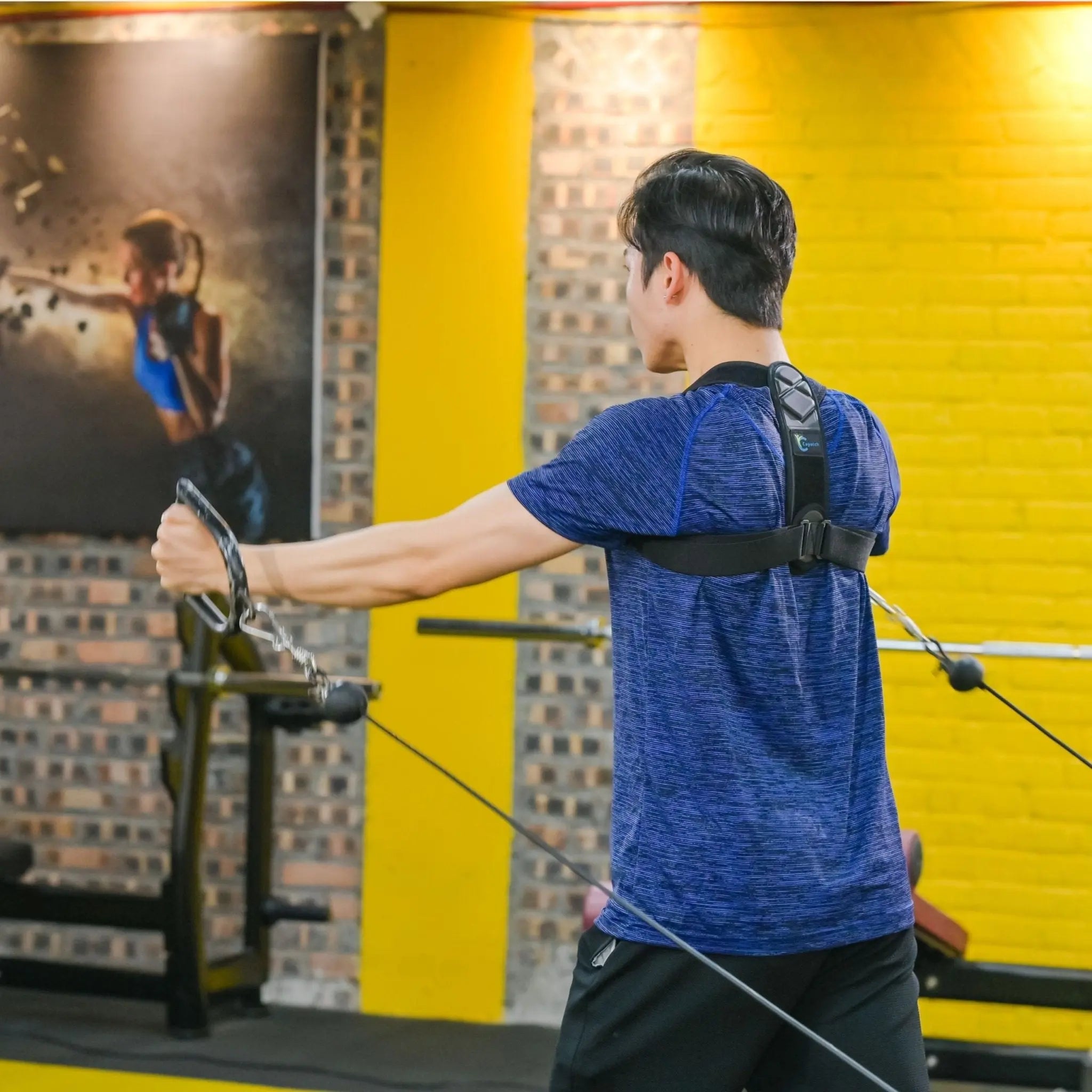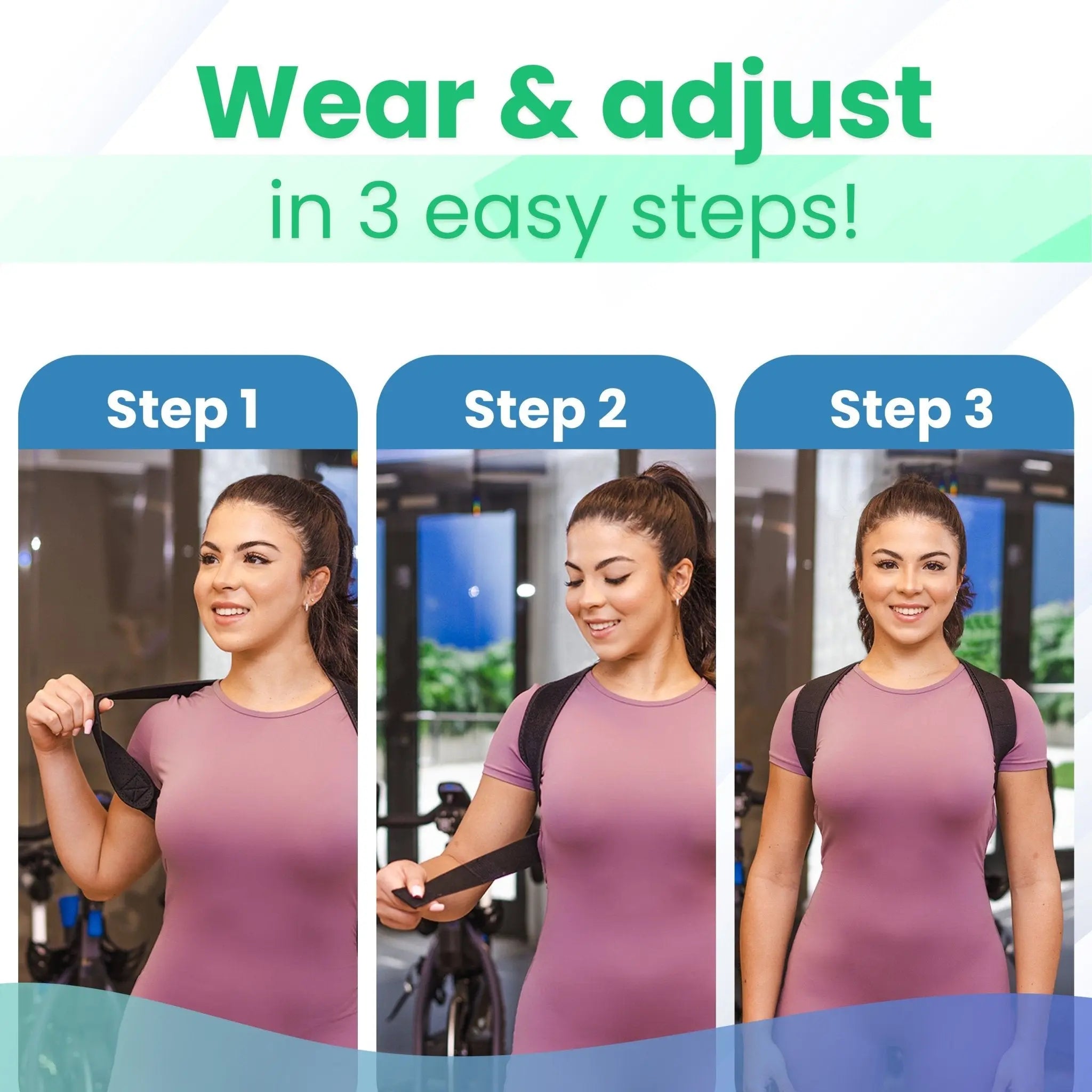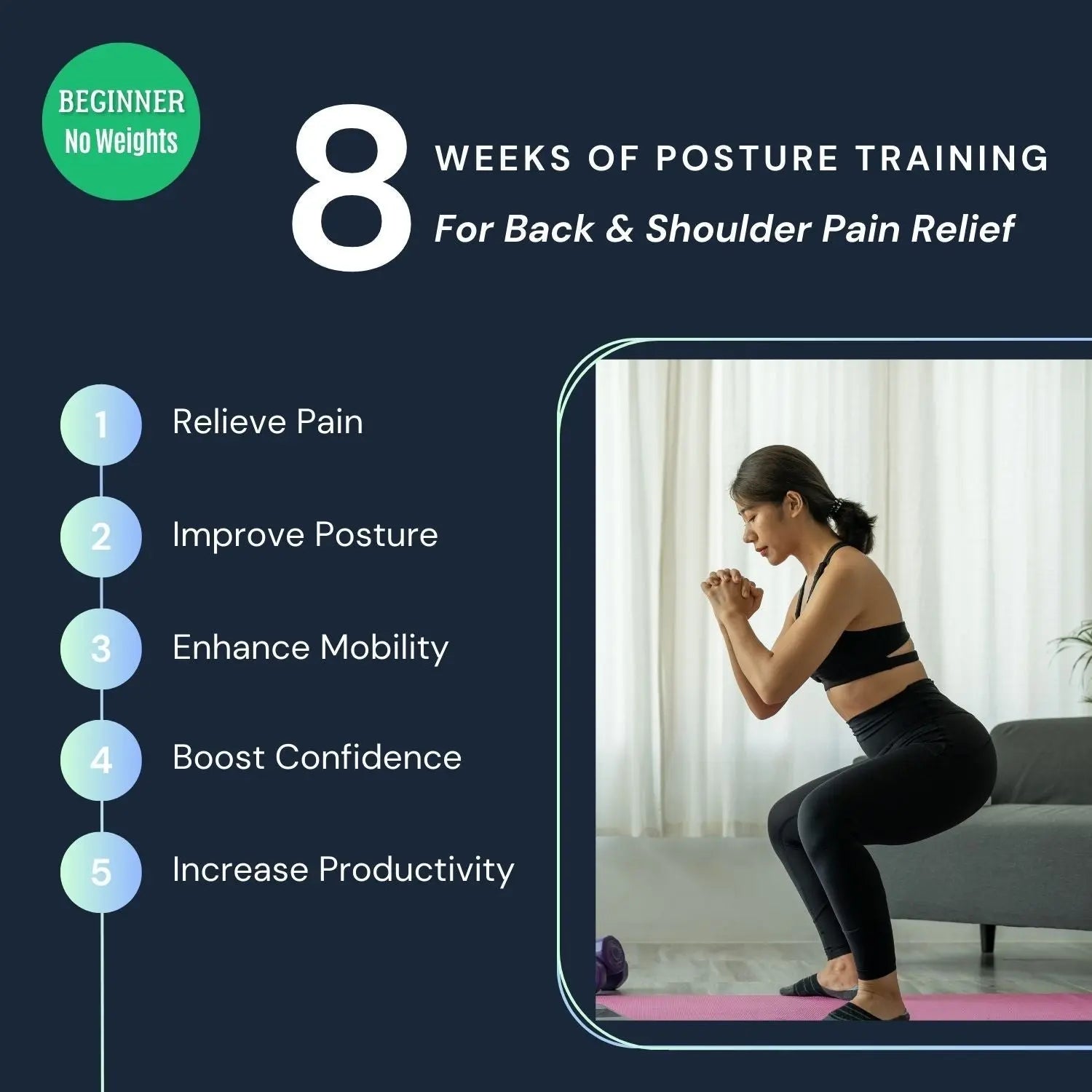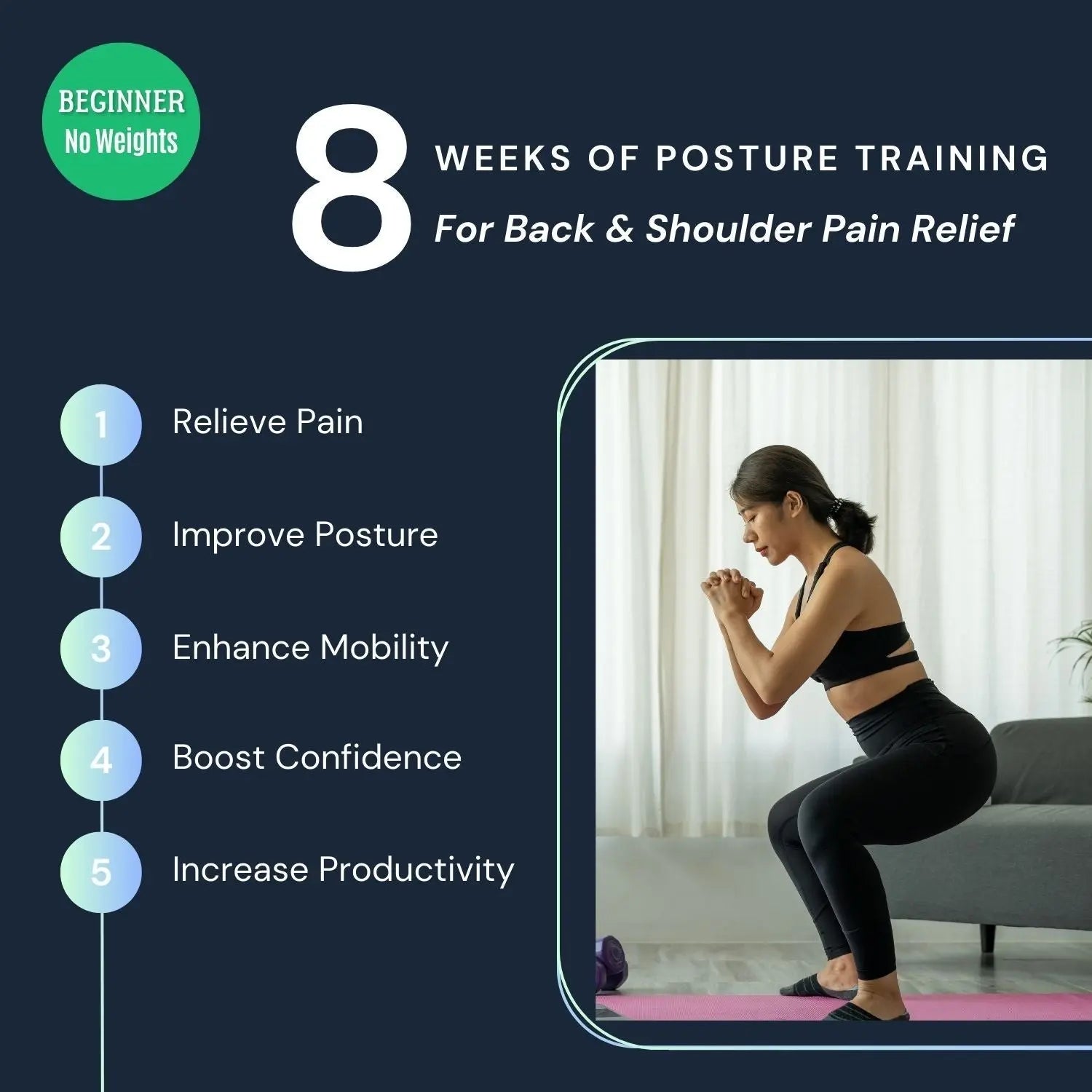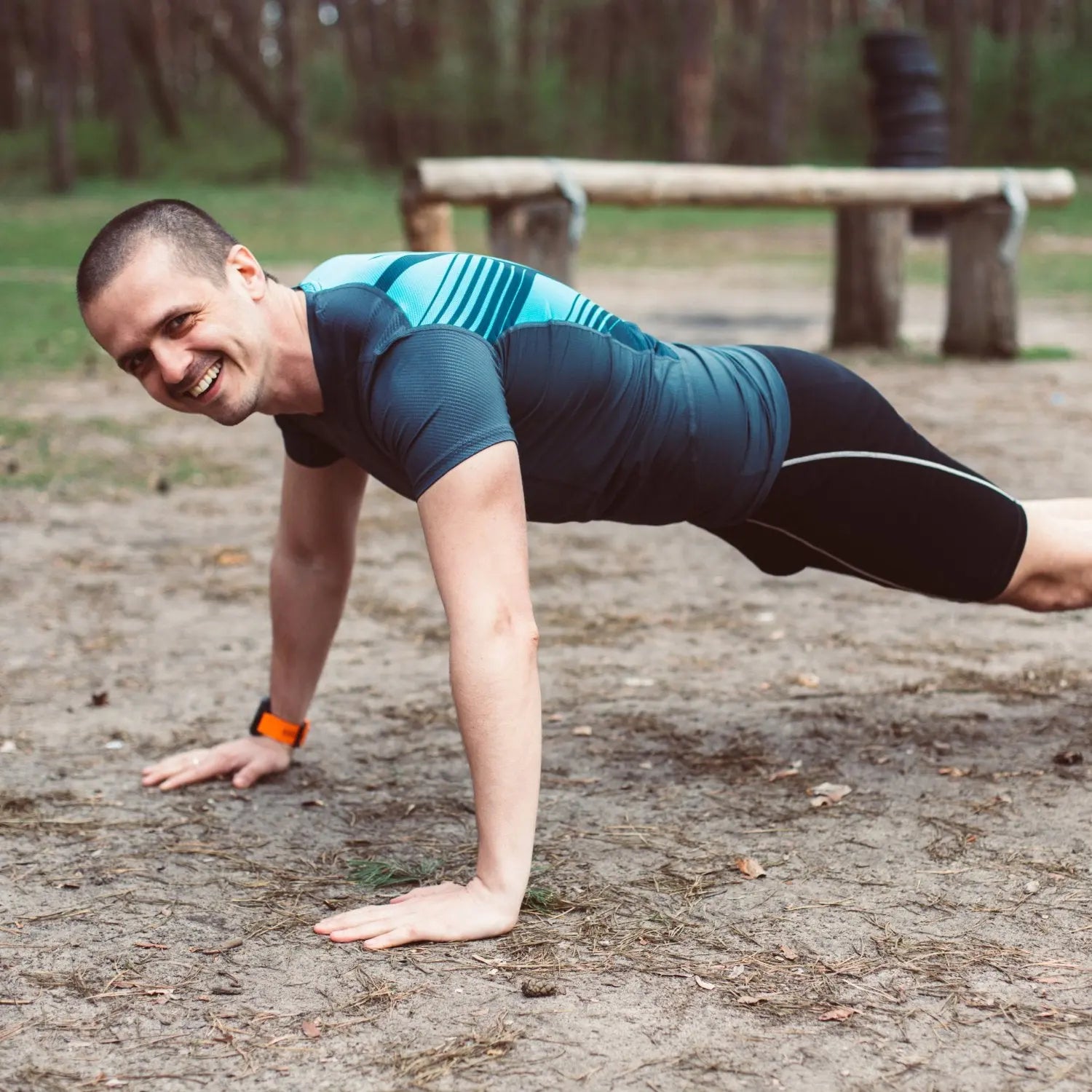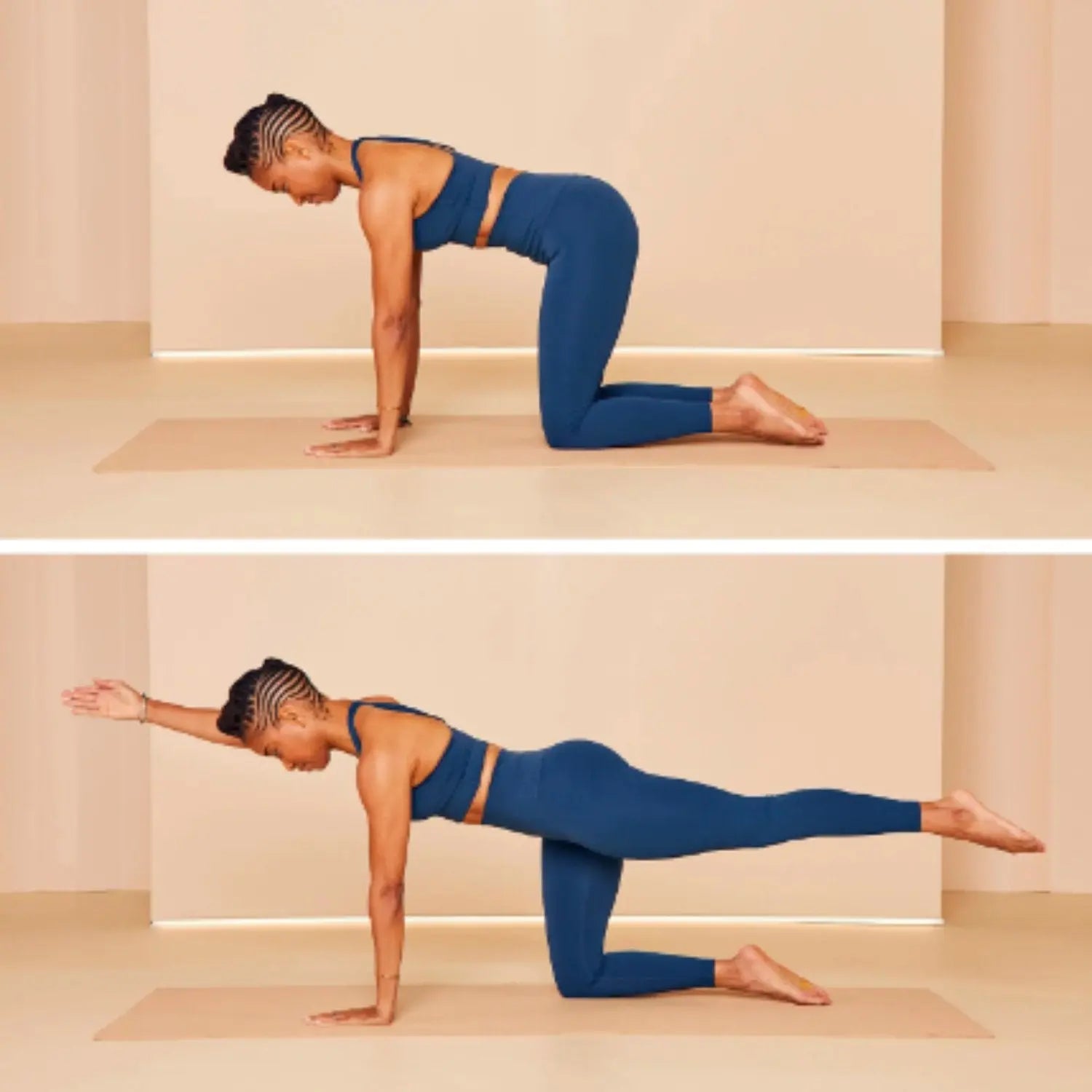How To Fix Forward Head Posture? Realistic Solutions

With prolonged periods of poor posture, one tend to develop a forward head posture. This common condition involves positioning the head in front of the shoulders, resulting in a rounded upper back and a protruding chin.
Forward head posture can lead to various health issues, such as headaches and neck pain. However, the condition can be effectively managed by taking appropriate steps in a timely manner. So, how can you fix forward head posture?
Regular exercises and stretches can help prevent this posture in no time. Additionally, consider wearing posture-correcting braces while improving your workplace ergonomics. Let's delve into more details!
What Is Forward Head Posture?
Forward head posture develops as a consequence of prolonged poor posture. This posture causes the head to move forward, positioning it in front of the shoulders, thereby rounding the upper back and the shoulders.
According to a study published in the Journal of Physical Therapy Science, 71.4% of participants exhibited forward head posture.
Another study found that 78% of young adults had a forward head posture, with individuals working desk jobs being more prone to this condition than the general population.
4 Reasons Behind Developing A Forward Head Posture
Forward head posture often occurs due to prolonged sitting, poor posture, or excessive use of electronic devices. Here are a few primary causes commonly observed:
1. Poor posture
Sitting or standing with a slouched posture, rounded shoulders, or a forward head position can cause the neck and upper back muscles to become tight or weak, resulting in a forward head posture.
2. Prolonged sitting
Individuals with desk jobs often remain seated for extended periods. This can significantly impact their alignment. As they have to push their head forward to view the computer screen, it gradually leads to the development of forward head posture.
Sitting for long durations, such as at a desk or in a car, can cause the neck muscles to become fatigued and the head to shift forward.
3. Excessive device use
Young people who excessively use devices like smartphones, tablets, or computers may develop poor posture due to keeping their heads in a forward position for prolonged periods.
4. Imbalanced muscle stability
If an individual has weaker and tighter neck muscles that hinder flexibility, it can contribute to forward head posture.
How To Diagnose If You Have Forward Head Posture?
You can perform a simple self-assessment to determine if you have a forward head posture. Stand with your back against a wall. Then, align your heels, hips, shoulders, and head against the wall.
If you are unable to touch the back of your head to the wall without lifting your chin, you may have a forward head posture.
However, it's recommended to consult a healthcare professional or physical therapist for a thorough analysis to assess your posture and confirm the presence of forward head posture.
Tools such as plumb lines or digital imaging can be utilized to accurately determine the presence of this condition.
How To Correct Forward Head Posture?
If you find yourself dealing with forward head posture, don't worry; there are several steps you can take to improve your posture. Consider the following:
1. Improve your posture
Become mindful of your alignment as soon as you notice forward head posture. Poor posture is often the main cause of this condition. Practice sitting and standing up straight while maintaining proper spinal alignment.
2. Use ergonomic equipment
Ensure that your work environment promotes good posture, especially if you have a desk job. Learn about ergonomic workspace setup, including standing desk ergonomics, and adopt good sitting, and standing positions.
Moreover, invest in ergonomic equipment such as a supportive chair, an adjustable desk, and a monitor stand to enhance your working posture.
3. Perform neck stretches
Stretching plays a vital role in improving flexibility and posture. Incorporate neck stretches like side bends, rotations, and flexion into your routine.
4. Strengthen upper back muscles
In addition to stretching, focus an exercises to improve your posture. Exercises like rows, pull-ups, and lat pulldowns can help reinforce these muscles. Chin tucks and head nods are also beneficial for correcting forward head posture.
5. Improve flexibility
Stiffness in your neck and chest muscles contributes to this postural issue. Perform exercises and stretches that specifically target these areas. Engaging in sports or activities that enhance overall flexibility can also be helpful.
6. Reduce screen time
Increased screen time can contribute to forward head posture, especially in younger individuals. Research suggests that prolonged use of electronic devices is associated with a higher risk of developing this condition in young adults.
Limit your screen time and consider setting timers while using electronic devices to protect your eyes and improve posture.
7. Seek physical therapy
If forward head posture persists for a significant period, consider seeking physical therapy. A personalized treatment plan can help address muscle imbalances and provide guidance throughout your posture-correcting journey.
8. Be mindful of your posture
Be mindful of your posture throughout the day and make necessary adjustments to maintain good posture.
Over time, your muscles will become more engaged, and your brain will alert you when you are in an incorrect position.
5 Tips To Improve The Forward Head Posture For Desk Workers
When you have desk work, it’s unavoidable to sit in one position for hours. But there are several things that you can do when you have to work at your desk so you can avoid the forward head posture:
1. Adjust your workstation
The first thing here is to notice your workstation's ergonomics. Using a combination of sitting desk ergonomics and standing desk ergonomics can improve your posture fast.
Make sure your desk, chair, and computer monitor are all positioned properly. Your monitor should be at eye level and at a proper length away from you.
2. Sit with good posture
No matter what you are doing, you need to be mindful of your posture.
Sit up straight keeping your back in the right position while ensuring the proper spinal alignment. Your shoulders need to be relaxed and your feet flat on the floor.
3. Stretch your neck
While sitting in the chair for hours, you need to ensure enough movement not to stiffen your neck muscles.
To ensure muscle activity, stretch your neck muscles from time to time. Take part in side bends, rotations, and flexion even while you are sitting.
4. Strengthen your upper back muscles
You need to keep your upper back muscles strong and flexible not to cause a forward head posture. Exercises like rows, pull-ups, and lat pulldowns can help strengthen these muscles.
5. Take several breaks
If you have a desk job most of the time, remind yourself to take breaks in between. You can follow the Pomodoro technique to ensure the break time.
In the meantime, you can conduct stretches and light exercises that don’t require any gear.
Side Effects Of Forward Head Posture
Prolonged forward head posture without taking any prevention can cause severe issues. The issues include strain on the neck muscles, leading to pain and discomfort.
Besides, you may also face tension headaches, which are caused by muscle tension in the neck and shoulders.
When you are in this for a long time, it can cause stiffness and reduced mobility in the neck and upper back.
Which can contribute to your shoulder pain and discomfort. You may also face upper back pain, jaw pain, and breathing difficulties.
Although there are not any reports of serious diseases that this posture causes, you might still face some troublesome consequences if you leave this untreated.
In the worst case scenarios, you might face diseases like the development of degenerative disc disease over time.
6 Exercises To Improve Forward Head Posture
Now we will share some exercises that will help you to improve your posture if you ensure consistency. Here are a few effective ones:
1. Chin Tucks
- Keep your back straight and sit up
- Your shoulders will remain relaxed
- Slowly pull your chin straight back and try to create a "double chin"
- Hold for a few seconds, and release
- Repeat for several reps
2. Shoulder Blade Squeeze
- Keep your back straight and sit up
- Keep your arms at your sides
- Now squeeze your shoulder blades together like you are trying to hold a bottle between them
- Hold for a few seconds, then release.
3. Wall Angels
- Stand and press your back against a wall
- Your feet will remain six inches away
- Now raise your arms to shoulder height
- Slowly move your arms up and down
- Repeat until you feel you are going well
4. Seated Spinal Twist
- Sit up straight with your feet flat on the floor
- Now twist your upper body to one side
- Your opposite hand will remain on the outside of your thigh
- Now use your other hand to hold the back of your chair
- Hold for a few seconds, then switch sides
5. Foam Roller Exercises
- First, lie on a foam roller
- The roller will run lengthwise down your spine
- Now slowly roll up and down
- You need to stop at any areas of tightness
6. Upper Trapezius Stretch
- Sit at your desk, and gently tilt your head to one side
- Now use your hand to gently pull your head further to the side
- When you feel a stretch in your neck, stop for 15-30 seconds
- Repeat on the other side
Frequently Asked Questions (FAQs)
Can forward head posture be corrected?
Yes, you can correct your forward head posture if you take proper action. Pay attention to your posture throughout the day and avoid tasks that ruin your alignment.
Moreover, remain consistent in your posture-correcting exercises.
What muscles are weak in forward head posture?
The forward head posture makes your neck and back muscles weak. They stiffen over time and if you don’t take the right actions, you might even feel a lack of flexibility.
How long does it take to correct forward head posture?
With proper exercise and stretching, you can fix your forward head posture in six to 12 weeks. But you need to be very consistent to see progress initially.
Besides, if you are using a posture corrector, make sure to wear that properly to see visible results.
Why is my head so forward?
You might have developed a forward head posture which is also known as nerd neck.
This means, your head is positioned in front of the shoulders which will stiffen your neck muscles over time.
How does forward head posture affect the brain?
A continuous forward head posture can impact your sympathetic nervous system response.
Thus, you might feel a mismatch in the brain signals while having trouble moving some organs properly. Moreover, it also causes numbness in certain body parts.
Got To The Ending
You can keep yourself out of all the problems if you know how to fix forward head posture. Don’t be envious of people who have the perfect posture, you can have it too.
Ensure proper dedication and consistency to see a visible difference in your posture within 2 weeks.


























